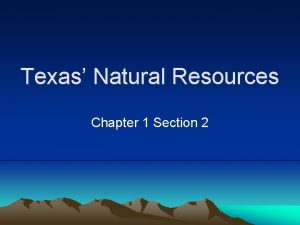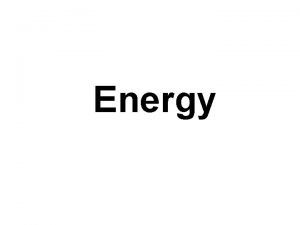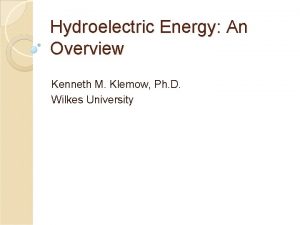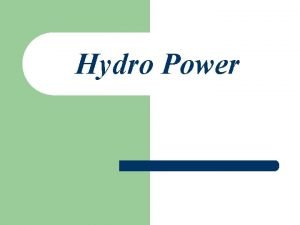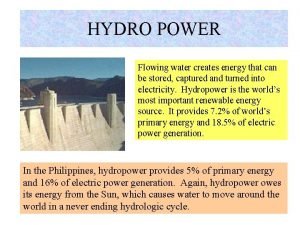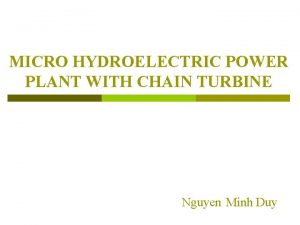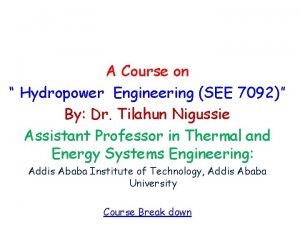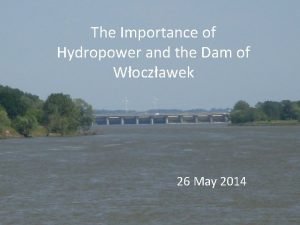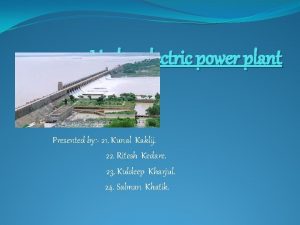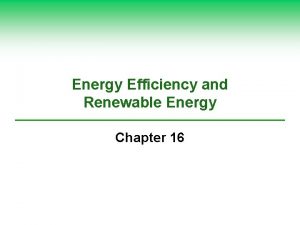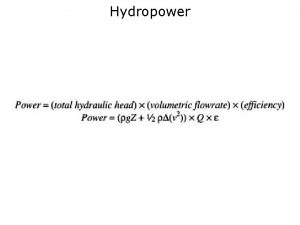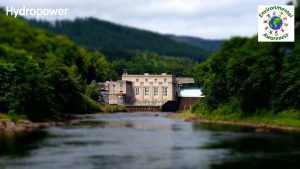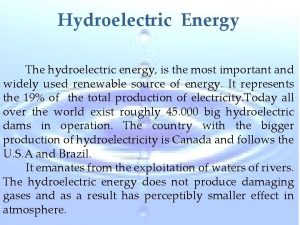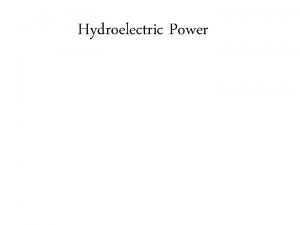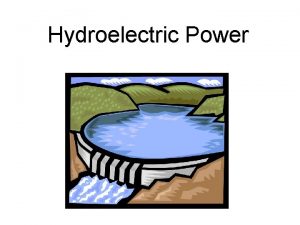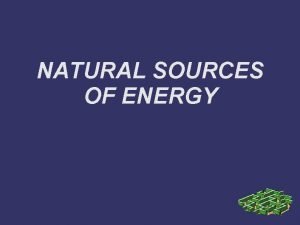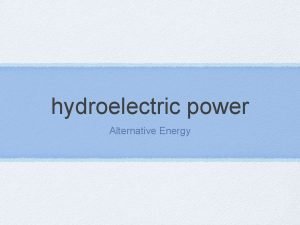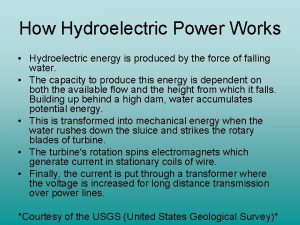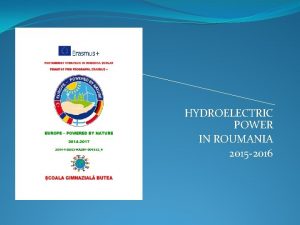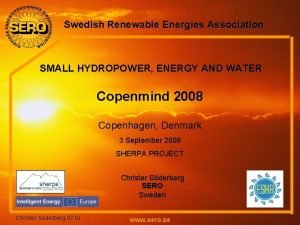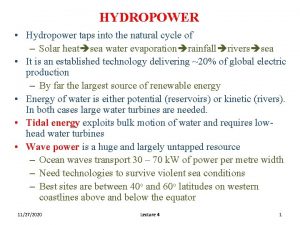Hydroelectric energies Rivers energy Sea energy Hydropower plants













- Slides: 13

Hydroelectric energies Rivers energy Sea energy


Hydropower plants p p p Worldwide, hydropower plants produce about 24 percent of the world's electricity and supply more than 1 billion people with power. Hydropower is the second source of electricity in France. In France it is 12% of the total electricity production, with an average production capacity of 70 TWh per year

How does it work ? Hydropower plants are based on a rather simple concept p Hydropower plants harness water's energy and use simple mechanics to convert that energy into electricity. p Water flowing through a dam turns a turbine which turns a generator. p


Here are the basic components of a conventional hydropower plant p p p p Dam - Most hydropower plants rely on a dam that holds back water, creating a large reservoir. Often, this reservoir is used as a recreational lake Intake - Gates on the dam open and gravity pulls the water through the penstock, a pipeline that leads to the turbine. Water builds up pressure as it flows through this pipe Turbine - The water strikes and turns the large blades of a turbine, which is attached to a generator above it by way of a shaft. The most common type of turbine for hydropower plants is the Francis Turbine, which looks like a big disc with curved blades. A turbine can weigh as much as 172 tons and turn at a rate of 90 revolutions per minute (rpm) Generators - As the turbine blades turn, so do a series of magnets inside the generator. Giant magnets rotate past copper coils, producing alternating current (AC) by moving electrons. Transformer - The transformer inside the powerhouse takes the AC and converts it to higher-voltage current Power lines - Out of every power plant come four wires: the three phases of power being produced simultaneously plus a neutral or ground common to all three Outflow - Used water is carried through pipelines, called tailraces, and re -enters the river downstream

Here are the basic components of a conventional hydropower plant

Pumped-storage hydroelectric plant

Pumped-storage hydroelectric plant: p A plant that usually generates electric energy during peak load periods by using water previously pumped into an elevated storage reservoir during off-peak periods when excess generating capacity is available to do so. When additional generating capacity is needed, the water can be released from the reservoir through a conduit to turbine generators located in a power plant at a lower level.

Hydroelectric production


The Rance tidal power plant The dam of the plant measures 332. 5 meters

The Rance tidal power plant, power from the ocean p p p The Rance site lent itself well to such a project. First, because the amplitude between low and high tides is one of the highest in the world (it reaches up to 13. 5 metres during equinoctial tides) Second, because the estuary offers a reservoir of 22 km 2 capable of impounding 180 million m 3. At peak periods, 18, 000 m 3 of water per second go through the estuary, or a flow that is ten times greater than that of the Rhone River. To harness such power, the estuary had to be blocked by a 750 metres long and 13 metres high structure. Twenty-five years of studies and six years of construction works were needed to erect the Rance tidal power plant. Since 1967, this facility, the only full-scale power station of this type in the world, generates 600 million k. Wh every year, enough to provide energy to 250 000 households.
 Why are some rivers in texas called “wrong way” rivers?
Why are some rivers in texas called “wrong way” rivers? Disadvantages of geothermal energy
Disadvantages of geothermal energy Hydropower energy
Hydropower energy Impoundment facility
Impoundment facility Hydroelectric impoundment
Hydroelectric impoundment When flowing water is captured and turned into
When flowing water is captured and turned into Using synonyms and antonyms as context clues
Using synonyms and antonyms as context clues Plastik kaşık
Plastik kaşık Hydropower engineering courses
Hydropower engineering courses Importance of hydropower
Importance of hydropower Hydropower system
Hydropower system Advantages and disadvantages of hydroelectricity
Advantages and disadvantages of hydroelectricity Advantages and disadvantages of dam
Advantages and disadvantages of dam Hydropower status report 2020
Hydropower status report 2020
